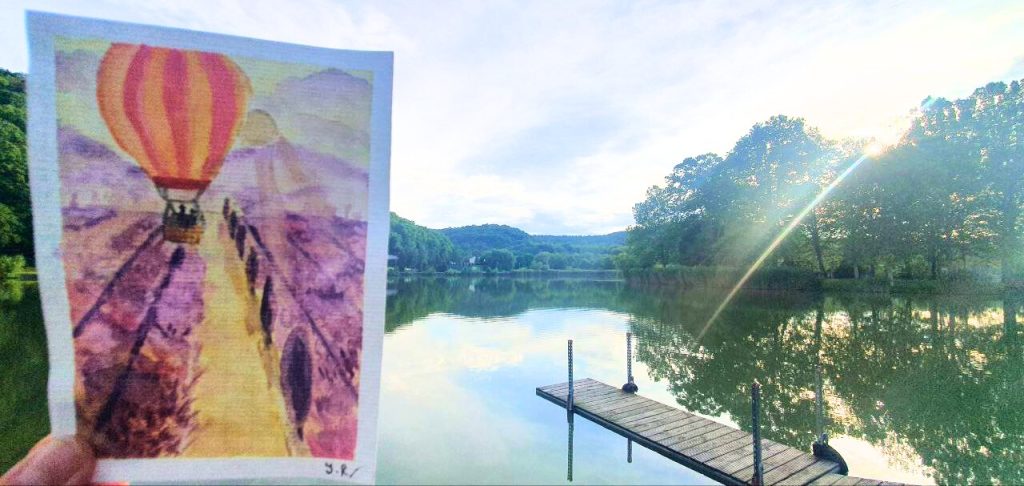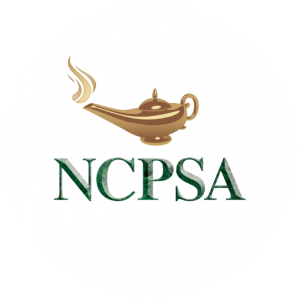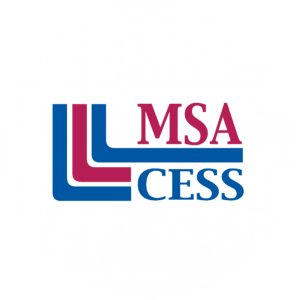A single postcard is moving across the world with a powerful message: No matter where we are in the world, we are not alone. We interviewed Clonlara parent Isabell, creator of the postcard project, to get the full story.
Clonlara: What inspired you to start your postcard project?
Isabell: The idea of the postcard came to me overnight. Just before falling asleep, I was thinking about what theme we could paint in the next Clonlara art club, which I facilitate. That’s when I realized how far away my students actually are. It always fascinates me to hear which countries and continents the children in my club are joining from. One girl, for example, spent some time in South Africa.
That’s when the idea grew: to make this distance visible for my own children as well as for the students in the art club.
My children love looking at Google Maps or atlases to see where we are, or where we (or the grandparents) have been on vacation. This way, they learn which continents exist, what the weather is like in different places, or why it’s evening there while it’s still early morning here. One question leads to the next.
In the art club, this comes up again and again as well: I always begin by asking the young people how they are, what they’ve experienced, and what the weather is like. Of course, the answers are very different—some have snow while others experience 40°C heat.
That’s how the idea developed further: to make what we experience weekly more tangible, and to create a real connection. My children and the students in the art club can see that even though we’re far apart, we are still connected. The world today is incredibly well networked—though there are limits, as we’ve noticed.
Clonlara: Can you explain the project and how it works?
Isabell: The project centers around a postcard that I painted. On it you see a lavender field, mountains in the background, and a hot air balloon (which my older son suggested painting). The balloon symbolizes the journey. Inside it are two people, representing connection. The balloon seems to have just taken off, as it is still rising.
After the idea for the postcard project came to me, I shared it the very next day in the art club. During that session, I painted the postcard.
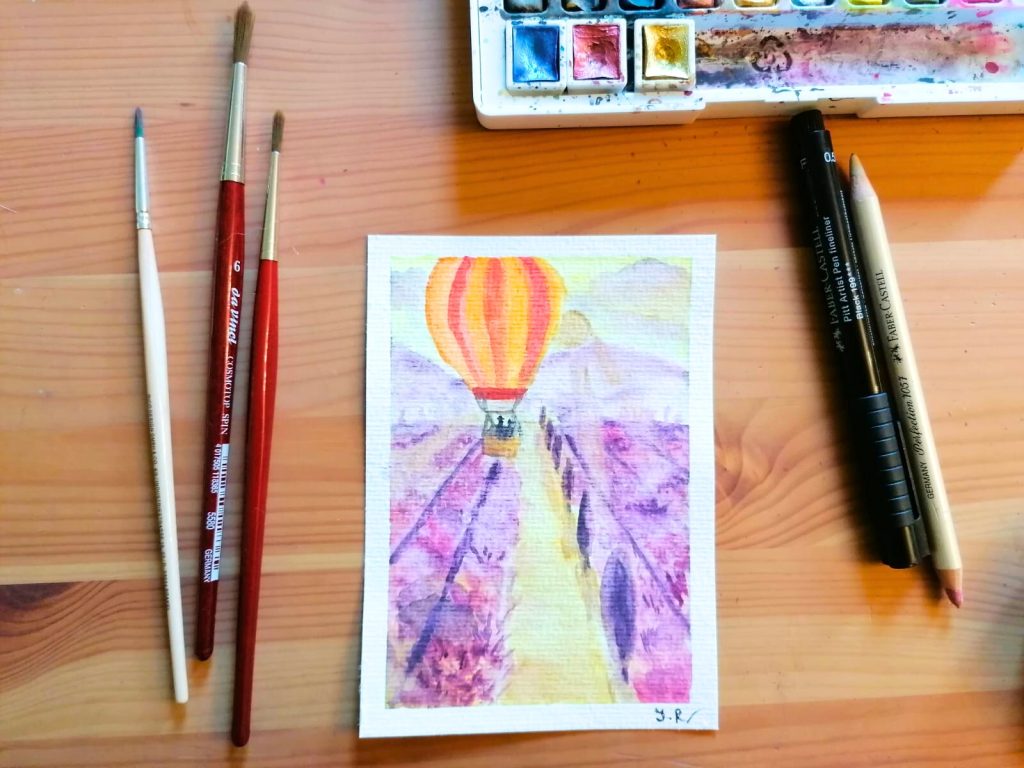
Later, I shared the idea with a parent group. I wrote there that I would love to let the postcard travel around the world, and that I would add a QR code so people could find me on Instagram and share when the postcard arrives. Participants would write their name and town/region directly on the card before sending it on to another family.
The idea was received enthusiastically in the parent group, and other parents quickly helped me set up a dedicated group for those interested. From there, the project came together easily.
Clonlara: Tell us how it happened!
Isabell: Everything happened very quickly—within a week. I had the idea on February 2, the art club met on February 3, and I posted the first Instagram reel on February 9. A well-known musician, who goes by Fractalis online, kindly provided music free of charge. I was supported by several students and parents from Clonlara’s German Program.
The reel texts are in both German and English so that non-German-speaking Clonlara students can join too.
Of course, we hope the postcard will not only travel through Europe but also reach America, Africa, Asia, and Australia. This year, as reported at Clonlara’s Global Welcome Celebration, we have students in over 80 different countries. It would be fantastic if the card continued its journey and we could unite every country through it.
Clonlara: Has the project run into any issues?
Isabell: Yes. One student in South America would love to receive the card, but she’s afraid it might get lost because the postal service there can be very unreliable. I considered sending the card to the German consulate in her country so it could reach her safely. I would be very grateful for help—maybe another family has an idea how to send a postcard securely to Peru or Ecuador.
Clonlara: How did the project impact participants?
Isabell: The students experienced, and continue to experience, how interconnected we all are—how connected the world is today. They are literally holding a piece of my creativity in their hands and can see that even though we meet in the art club online, we can still reach each other across all those miles. They see that I really paint, that the postcard is real, and that it carries a message:
We are one human family. No matter where we are in the world, we are not alone.
It’s like a spark traveling around the globe, connecting us. Especially as homeschool families, you sometimes feel isolated. The students can now see: that’s not true—there are more of us, and the community is growing!
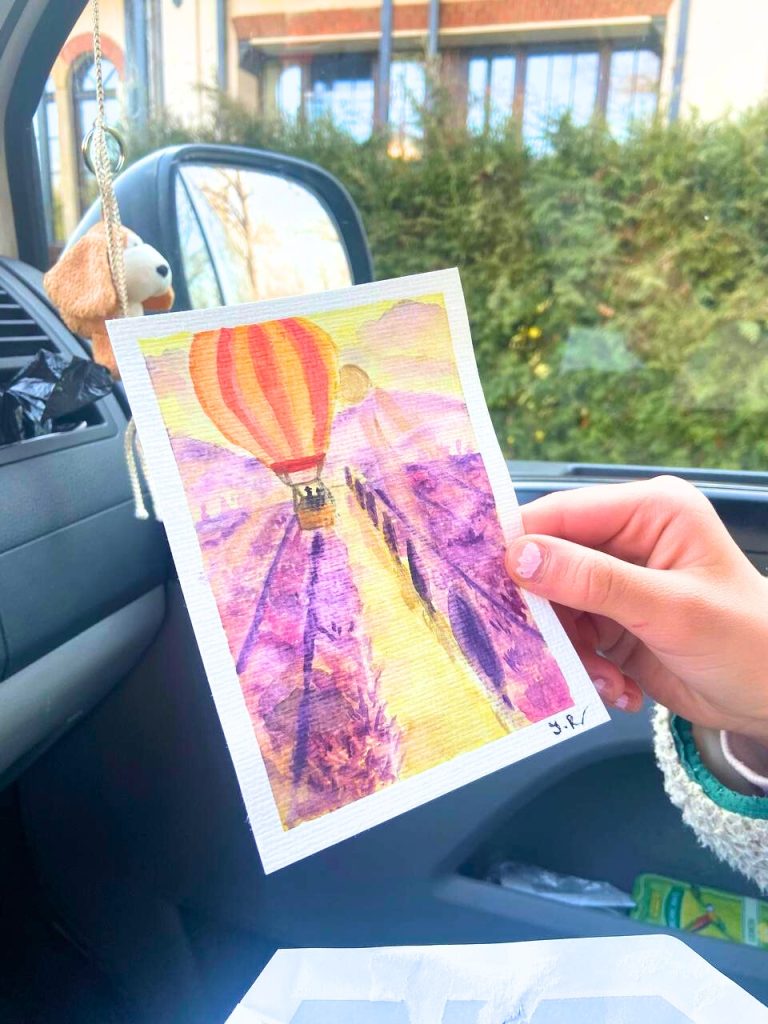
They also learn where the other families are located. They can practice math by calculating distances and travel times for a postcard. They see what challenges mail delivery can bring. They can practice reading and writing by adding their names and towns to the card. They learn geography by tracking where the postcard has already been.
It all comes down to curiosity. Children who ask questions, search for answers, and engage with the world learn all day long. Homeschool children actively engage with their environment, and the postcard shows them they are not alone but connected to a worldwide family.
Clonlara: What feedback did you receive from students and families?
Isabell: One student, Emily, wrote to me:
I thought it was really cool to be part of such a wonderful project—and to be honest, I was also a little proud. I especially enjoyed photographing the postcard at the beach: putting it in just the right light and showing the beautiful surroundings where it was at that moment.
It was always exciting when I could see where the card was currently traveling. That gave me so much joy!
Thank you so much for bringing this card to life—it’s something very special.
At the monthly parent meeting of the German Program, the postcard was often mentioned, and both parents and students spoke positively about it.
In the art club, too, the postcard’s journey was discussed, and some students were sad because they weren’t reachable by mail. It would be wonderful to find a solution for these young people as well.
Another family reported that the very moment they took the postcard out of their mailbox, a hot air balloon was floating over their town. What a perfect coincidence. They said:
A card travels around the world. We find Isabell’s idea very beautiful, as this card symbolizes connection. Every journey leaves its mark, bringing new experiences and adventures, and the card documents some of them. Every kilometer the card travels, every time it is held in someone’s hands, every reader of the card contributes their own energy and passes it on to the other families. May many more beautiful pictures and thoughts enrich this traveling card.
The Postcard’s Travels
- February 7, 2025 – Erfurt (Thuringia, Germany)
- February 8, 2025 – Leipzig (Saxony, Germany)
- March 21, 2025 – Gandia (Spain)
- April 14, 2025 – near Freiburg (Baden-Württemberg, Germany)
- May 21, 2025 – Szentkatalin (Hungary)
- August 11, 2025 – traveled through Hungary from Lake Orf to Lake Balaton, then on to Lake Geiseltal (Saxony-Anhalt, Germany), and back to Thuringia
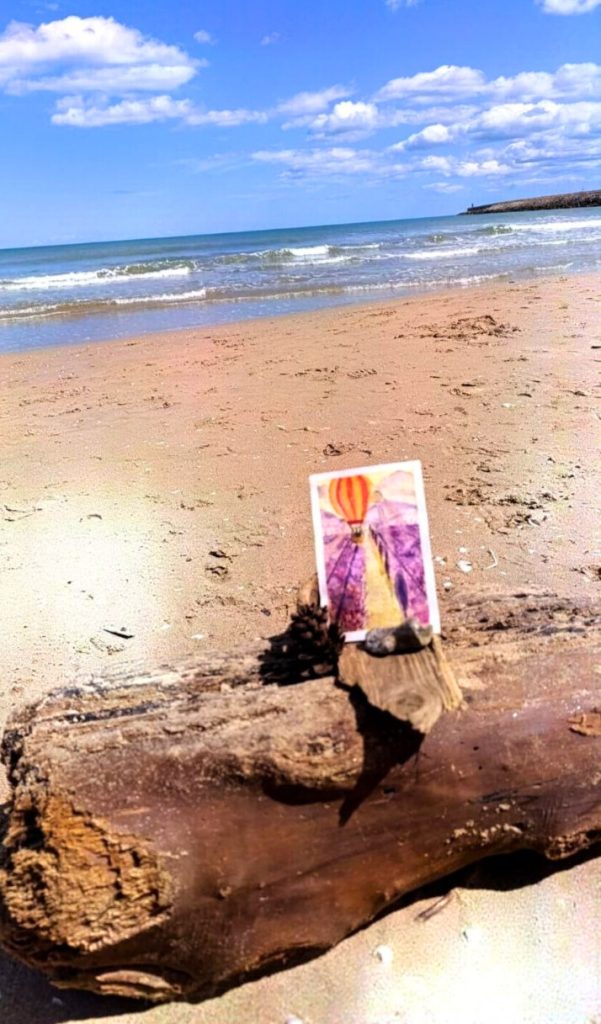
Gandia Beach, Spain 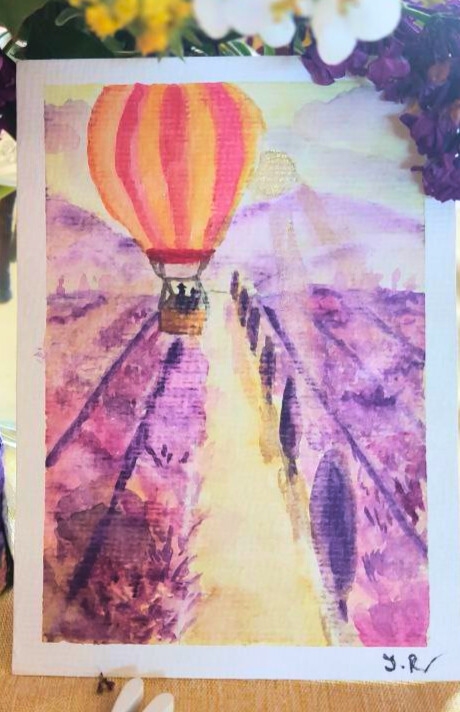
Near Freiburg, Germany 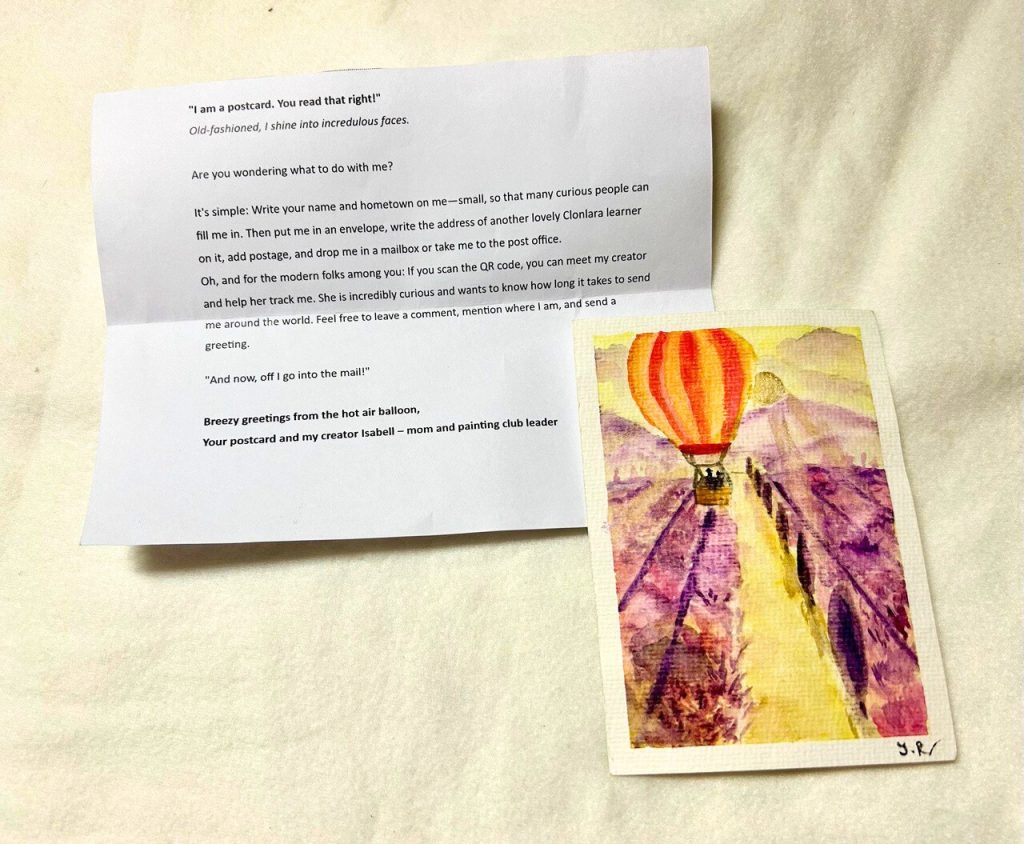
Thuringia, Germany
In October 2025, the postcard will be handed over to a new family and will continue its journey to Spain. Follow @noiramaya on Instagram to see the rest of the postcard’s travels!




